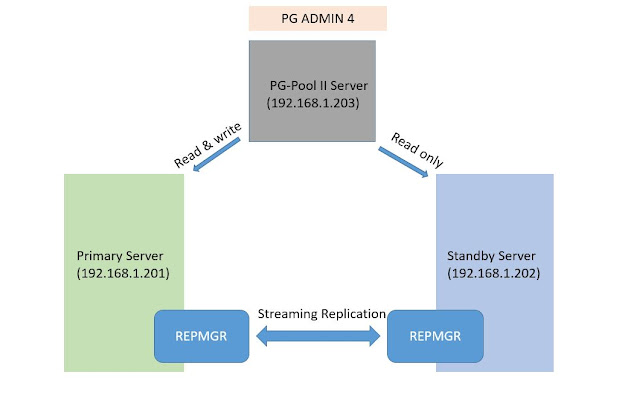PostgreSQL DataTypes
Numeric Types:
Name
|
Storage
Size
|
Range
|
smallint
|
2
bytes
|
-32768
to +32767
|
integer
|
4
bytes
|
-2147483648
to +2147483647
|
bigint
|
8
bytes
|
-9223372036854775808
to 9223372036854775807
|
decimal
|
variable
|
up
to 131072 digits before the decimal point; up to 16383 digits after the
decimal point
|
numeric
|
variable
|
up
to 131072 digits before the decimal point; up to 16383 digits after the
decimal point
|
real
|
4
bytes
|
6
decimal digits precision
|
double
precision
|
8
bytes
|
15
decimal digits precision
|
smallserial
|
2
bytes
|
1
to 32767
|
serial
|
4
bytes
|
1
to 2147483647
|
bigserial
|
8
bytes
|
1
to 9223372036854775807
|
Monetary Types:
Name
|
Storage
Size
|
Range
|
money
|
8
bytes
|
-92233720368547758.08
to +92233720368547758.07
|
Character Types:
S.
No.
|
Name
& Description
|
1
|
character
varying(n), varchar(n)
variable-length
with limit
|
2
|
character(n),
char(n)
fixed-length,
blank padded
|
3
|
text
variable
unlimited length
|
Binary Data Types:
Name
|
Storage
Size
|
bytea
|
1
or 4 bytes plus the actual binary string
|
Date/Time Types:
Name
|
Storage
Size
|
Description
|
timestamp
[(p)] [without time zone ]
|
8
bytes
|
both
date and time (no time zone)
|
TIMESTAMPTZ
|
8
bytes
|
both
date and time, with time zone
|
date
|
4
bytes
|
date
(no time of day)
|
time
[ (p)] [ without time zone ]
|
8
bytes
|
time
of day (no date)
|
time
[ (p)] with time zone
|
12
bytes
|
times
of day only, with time zone
|
interval
[fields ] [(p) ]
|
12
bytes
|
time
interval
|
Boolean Type:
Name
|
Storage
Size
|
Description
|
boolean
|
1
byte
|
state
of true or false
|
Geometric Type:
Name
|
Storage
Size
|
Description
|
point
|
16
bytes
|
(x,y)
|
line
|
32
bytes
|
((x1,y1),(x2,y2))
|
lseg
|
32
bytes
|
((x1,y1),(x2,y2))
|
box
|
32
bytes
|
((x1,y1),(x2,y2))
|
path
|
16+16n
bytes
|
((x1,y1),...)
|
path
|
16+16n
bytes
|
[(x1,y1),...]
|
polygon
|
40+16n
|
((x1,y1),...)
|
circle
|
24
bytes
|
<(x,y),r>
(center point and radius)
|
Network Address Type:
Name
|
Storage
Size
|
Description
|
cidr
|
7
or 19 bytes
|
IPv4
and IPv6 networks
|
inet
|
7
or 19 bytes
|
IPv4
and IPv6 hosts and networks
|
macaddr
|
6
bytes
|
MAC
addresses
|
Text Search Type:
S.
No.
|
Name
& Description
|
1
|
tsvector
This
is a sorted list of distinct words that have been normalized to merge
different variants of the same word, called as "lexemes".
|
2
|
tsquery
This
stores lexemes that are to be searched for, and combines them honoring the
Boolean operators & (AND), | (OR), and ! (NOT). Parentheses can be used
to enforce grouping of the operators.
|
UUID Type (Universally Unique Identifiers)
Example:
UUID − 550e8400-e29b-41d4-a716-446655440000
XML Type:
Example:
XMLPARSE
(DOCUMENT '<?xml version="1.0"?>
<tutorial><title>PostgreSQL Tutorial </title>
<topics>...</topics>
</tutorial>')
XMLPARSE (CONTENT 'xyz<foo>bar</foo><bar>foo</bar>')
JSON Type:
The json data type can be used to store
JSON (JavaScript Object Notation) data. Such data can also be stored as text,
but the json data type has the advantage of checking that each stored value is
a valid JSON value.
Example
|
Example
Result
|
array_to_json('{{1,5},{99,100}}'::int[])
|
[[1,5],[99,100]]
|
row_to_json(row(1,'foo'))
|
{"f1":1,"f2":"foo"}
|
ARRAY Type:
Example:
name text,
saving_per_quarter integer[],
scheme text[][]
);
Composite Types(Create Type):
Example:
CREATE TYPE inventory_item AS (
name text,
supplier_id integer,
price numeric
);
CREATE TABLE on_hand (
item inventory_item,
count integer
);
Range Types:
The
built-in range types available include the following ranges −
int4range − Range of integer
int8range − Range of bigint
numrange − Range of numeric
tsrange − Range of timestamp without time zone
tstzrange − Range of timestamp with time
zone
daterange − Range of date
Object Identifier Types:
Object identifiers (OIDs) are used
internally by PostgreSQL as primary keys for various system tables.
Name
|
References
|
Description
|
oid
|
any
|
numeric object identifier
|
regproc
|
pg_proc
|
function name
|
regprocedure
|
pg_proc
|
function with argument types
|
regoper
|
pg_operator
|
operator name
|
regoperator
|
pg_operator
|
operator with argument types
|
regclass
|
pg_class
|
relation name
|
regtype
|
pg_type
|
data type name
|
regconfig
|
pg_ts_config
|
text search configuration
|
regdictionary
|
pg_ts_dict
|
text search dictionary
|
Pseudo Types:
The PostgreSQL type system contains a
number of special-purpose entries that are collectively called pseudo-types. A
pseudo-type cannot be used as a column data type, but it can be used to declare
a function's argument or result type.
S.
No.
|
Name
& Description
|
1
|
any
Indicates that a function accepts
any input data type.
|
2
|
anyelement
Indicates that a function accepts
any data type.
|
3
|
anyarray
Indicates that a function accepts
any array data type.
|
4
|
anynonarray
Indicates that a function accepts
any non-array data type.
|
5
|
anyenum
Indicates that a function accepts
any enum data type.
|
6
|
anyrange
Indicates that a function accepts
any range data type.
|
7
|
cstring
Indicates that a function accepts
or returns a null-terminated C string.
|
8
|
internal
Indicates that a function accepts
or returns a server-internal data type.
|
9
|
language_handler
A procedural language call handler
is declared to return language_handler.
|
10
|
fdw_handler
A foreign-data wrapper handler is
declared to return fdw_handler.
|
11
|
record
Identifies a function returning an
unspecified row type.
|
12
|
trigger
A trigger function is declared to
return trigger.
|
13
|
void
Indicates that a function returns
no value.
|


Comments
Post a Comment